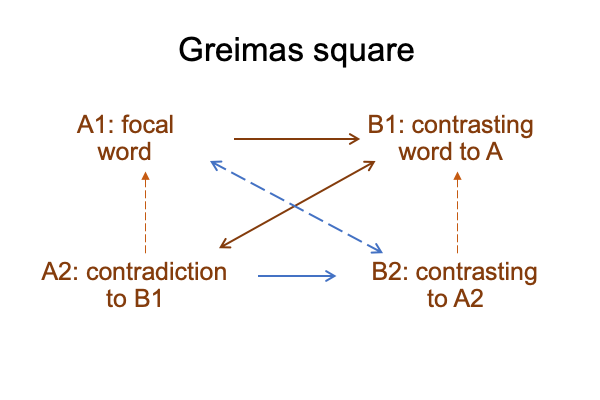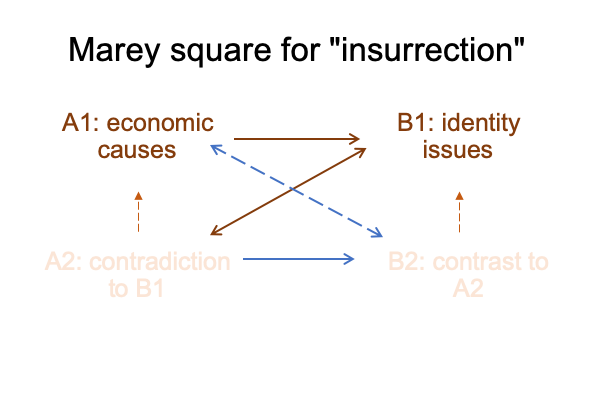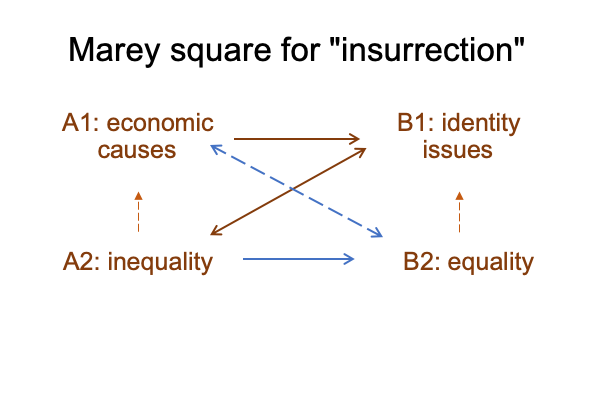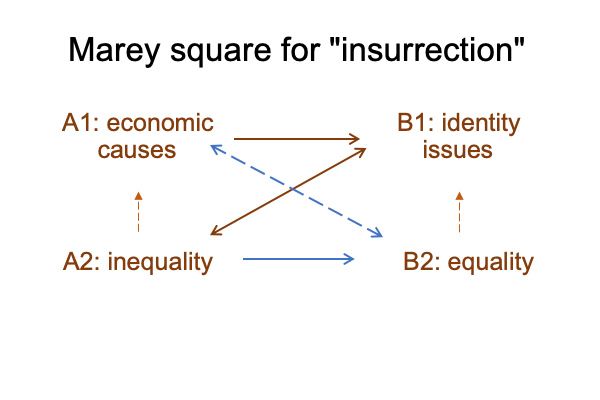Comments on Philip Marey’s Post (2021) “Insurrection” (Part 1)
0001 The Greimas square is introduced in Comments on Gregory Sandstrom’s Essay (2013) “Peace for Evolution”, available at smashwords. This purely relational structure is introduced as a way to visualize langue as a system of differences. This is not the only way to visualize the word-in-mind. But, it is useful in labeling a word as a node in a symbolic order.
0002 Here is a picture of the Greimas square.

0003 Philip Marey is a senior US strategist at Rabobank. He contributes to the website, Zerohedge. On Friday, January 8, 2021, at 18:25, Tyler Durden posts Marey’s short work, commenting on recent events. The title consists of one word: insurrection.
0004 “Insurrection2a” should go into slot A1, as the focus of attention. However, the situating actuality2b is causality2b. Marey’s post considers the projection of causality into the term. What explains the presence of insurrection2a?
0005 The first cause that Marey raises comes from academics, in particular, economists. The primary cause of insurrection is economic.
“Economic causes” go into slot A1.
0006 In contrast, Marey offers an alternate cause: identity. His researchers show that the US political system becomes increasingly polarized after the 1964 Civil Rights Act. This demonstration is a red herring, because polarization is already present in the 1964 presidential contest between Barry Goldwater (populist, “insurrectionist”) and Lyndon Johnson (party insider, “statist”). The 1964 Civil Rights Act is a symptom, not a cause.
The cause is the expansion of the federal government, with its attendant religion, Big Government (il)Liberalism (BG(il)L).
0007 Perhaps, the relevant factor for the growth of identity politics in the US is to be found in the rapid expansion of state university systems in the 1950s and early 1960s. New positions and fields of inquiry germinate a novel brand of Marxism. Cultural Marxism exploits cultural distinctions, rather than economic.
0008 “Identity” goes into slot B1.



